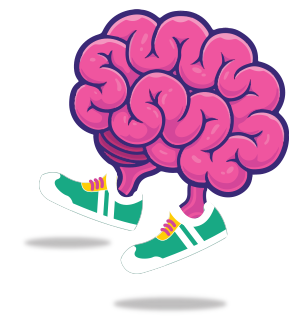Running Cadence: Why it Matters and How to Improve Yours

بخشی از زیبایی دویدن در سادگی آن است. شما نیازی به تجهیزات خاصی ندارید. تنها چیزی که نیاز دارید عزم و اراده و پاهایتان است. در عین حالی که این فوق العاده است، ما اغلب به سادگیِ عمل اجازه میدهیم تکنیک را تحت الشعاع خود قرار دهد.
At one point or another, most runners hit a plateau in pace or even become injured.
One solution to these issues could lie in your cadence.
WHAT IS CADENCE?
Put simply, cadence – also known as stride rate – is the number of steps a runner takes per minute (SPM). It’s the most common metric used to measure running form and remains important for several reasons.
For starters, the shorter your stride length and the quicker your stride rate, the faster and better you run. If you have a low cadence, you likely also have a long stride. Runners who overstride tend to lock their knees and slam their heels to the ground on every step.
This slows you down, creates a choppy, bouncy gait, and puts extra pressure on muscles and bones, making you more susceptible to injury.
By increasing your cadence, you’re doing more than moving your feet faster; you’re changing the positioning of where your foot lands. Rather than having your foot land in front of your hips, with a higher cadence, it lands underneath you – in your center of gravity.

This naturally decreases your stride length and increases your turnover, which means you’re wasting less energy moving up and down (from the ground to the air and vice versa). Rather, your body is focused on moving forward, making you faster.
When you increase your cadence, you also limit the force with which your body hits the ground. If you have a low cadence, you’re spending more time up in the in-air displacing your body mass so you hit the ground much harder than if you had a high cadence. The more steps you take per minute, the less time you spend in the air, equaling a softer impact on landing.
FINDING YOUR CURRENT + OPTIMAL RUNNING CADENCE
For many years, running experts encouraged runners to increase their stride rate to 180 SPM to achieve optimal running economy. This was based on legendary running coach Jack Daniels’ analysis of the strides of elite distance runners at the 1984 Olympics. He found the fastest and most efficient runners had a cadence of at least 180 SPM, with some runners reaching as high as 200 SPM.
But more recent studies show cadence is not one size fits all. Your optimal cadence depends on several factors, including your height, weight, and running ability. Cadence also varies based on the type of run you’re doing. A training or long run cadence will be slower than a speedwork or racing cadence, so you should determine your base cadence for your different types of paces (easy, normal, tempo, marathon, etc.).
 To do this, find a smooth, flat surface. A track or long stretch of road works perfectly. From there, you have two options. You can:
To do this, find a smooth, flat surface. A track or long stretch of road works perfectly. From there, you have two options. You can:
- Use the Wahoo Fitness app paired with a TICKR X heart rate monitor to automatically calculate your cadence – no math or counting required – by just running as much or as little as you like.
- Count your steps as you run. You don’t need to count both feet touching the ground for an entire minute, just count the number of times your right foot hits the ground in 30 seconds and multiply it by four. Repeat this a few times to ensure accuracy.
Note you’re more likely to run naturally and less likely to adjust your cadence, whether consciously or not, when you run with the Wahoo Fitness app than when you’re concentrating on counting your steps. It’s similar to breathing – once you start focusing on it, it’s all you can think about it.
INCREASE YOUR RUNNING CADENCE
Now that you have a number, you can work on increasing your steps per minute for your different types of runs.
Simply take one of your base steps per minute and increase that by 5 to 10 percent to find your personal goal cadence number. For example, if your base running cadence is 162 SPM, your goal cadence should be between 170-178 SPM.
Even if it’s not as fast as the elites, this small increase will still improve your running performance and reduce your chance of injury.

And, like anything with running, it’s crucial you take it slow. You can’t increase your cadence overnight and if you try, you’ll likely get injured. It can take up to two months for your body to adapt to a faster cadence and for it to feel normal. Don’t increase your cadence for your entire run. Increase your cadence either by time one minute of a faster cadence followed by three minutes of your base cadence – or by Distance: run every third mile or so at a faster cadence.
Once that starts feeling like second nature, increase it slightly again and again until you reach your personal goal cadence number.

Some additional tips that can help you increase your steps include:
-
Run to a beat
One of the most old-school yet effective ways to increase your cadence is by using a metronome; a device that produces a set number of beats or clicks per minute. Instead of counting your steps, you run to the rhythm where each beat equals a step. Don’t be surprised if after a while you start hearing the metronome rhythm in your head without it actually playing.
-
Focus on smaller steps, not on running faster
Speed will come naturally after you increase your cadence. For now, think baby steps, literally. A treadmill is a great place to practice as you can set the pace.
-
Track your progress in real-time with the Wahoo Fitness app or on the RIVAL Sport Watch.
Remember that it’s important not to increase your SPM too much, too soon, and the app can help you stay on track.
-
Do workouts geared specifically for faster turnover
Workouts like downhill sprints and running in place train the muscles in your body to move quicker.
Runners of all abilities, from beginner to advanced, can benefit from working on their cadence. While adjusting your stride might feel a little awkward and unnatural at first, if you stick with it, you’ll be on your way to becoming a faster, less-injury prone runner.



